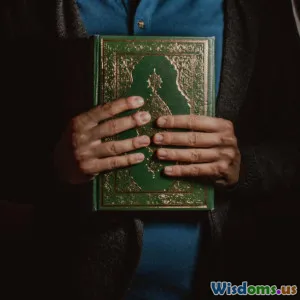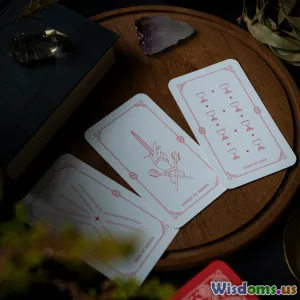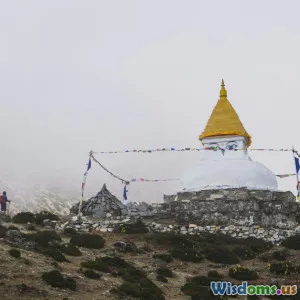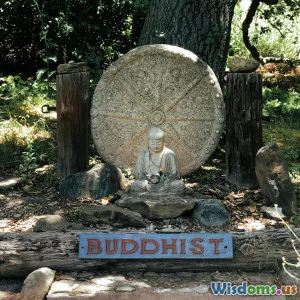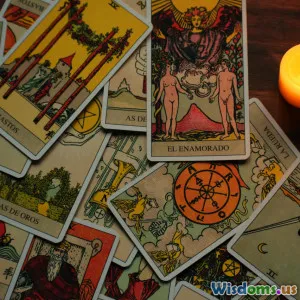
The Hidden Messages of Tarot Cards
7 min read Explore the hidden messages within tarot cards and unravel their mystical insights beyond mere fortune-telling. (0 Reviews)
The Hidden Messages of Tarot Cards
Tarot cards have long been associated with mystical practices, divination, and the arcane world of supernatural mysteries. Yet, beyond the veil of fortune-telling lies a rich tapestry of hidden messages and symbolic meanings. These enigmatic images are not mere oracle tools—they serve as windows into the subconscious mind, ancient wisdom, and universal archetypes echoing through human experience.
Introduction: More Than Cards
Imagine holding a deck of tarot cards—the vibrant images stir your curiosity. Are these cryptic symbols simply relics of a bygone era, or do they carry secrets about life’s mysteries, relationships, destiny, and even the unseen dimensions?
The hidden messages found within tarot cards stretch far beyond predictions. They blend psychology, spirituality, mythology, and esoteric traditions. Understanding these cards invites us to explore personal transformation, insights into the soul’s journey, and connection with aspects of the supernatural.
Origins and Symbolism
Tarot’s origins trace back to 15th-century Europe as playing cards, but their esoteric use blossomed over centuries. The most famous deck, the Rider-Waite-Smith (1910), distilled complex symbols into archetypal images designed by artist Pamela Colman Smith under the guidance of occultist A.E. Waite.
Archetypes and Imagery
Each tarot card represents powerful archetypes—universal symbols first extensively described by Carl Jung. For example:
- The Fool symbolizes new beginnings, innocence, and potential.
- Death represents transformation and endings, not literal death.
- The High Priestess embodies intuition, mysteries, and hidden knowledge.
Such images resonate with subconscious understanding, allowing tarot to function as a mirror reflecting inner truths.
Numerology and Elemental Associations
Numbers and elemental correspondences deepen the cards’ meanings. For instance, Wands align with fire (creativity, passion), Cups with water (emotion, intuition), Swords with air (thought, conflict), and Pentacles with earth (material, practicality). Numerology injects additional layers: the number three represents growth, while ten signals completion.
The Psychological Perspective
Though often linked to the supernatural, tarot has a significant psychological component, especially in modern contexts.
Carl Jung’s Influence
Jung’s concepts of the collective unconscious and archetypes provide a framework for how tarot images access shared human experiences. Tarot readings prompt reflection; they help individuals confront subconscious patterns, fears, and hopes.
Psychologist Sallie Nichols emphasized tarot cards as tools for waking up dormant aspects of the psyche.
Modern Therapeutic Use
Some therapists and counselors incorporate tarot for narrative therapy. Cards serve as metaphors helping clients articulate feelings and dilemmas, breakthroughs emerging from visual symbolism instead of direct questioning.
Hidden Messages in Tarot Spreads
The layout and pairing of cards during readings reveal nuanced messages.
Contextual Meaning
A card’s meaning can shift dramatically based on its position and neighboring cards. For example, the Tower card, often dreaded for its imagery of destruction, might signify a liberating breakthrough rather than mere chaos depending on the spread.
Combining Cards
Interpreting combinations—such as The Lovers next to The Devil—can point to complex relationship dynamics, including themes like temptation, choice, and self-awareness.
Tarot in Mysteries and the Supernatural
Tarot’s link to the supernatural comes from its long use among mystics, magicians, and occult practitioners.
Divination and Mediumship
Historically, tarot was part of broader divinatory systems like astrology and Kabbalah. Practitioners think tarot can tap into spiritual realms, conveying messages from guides or the universe.
An example is Aleister Crowley, who combined tarot with ceremonial magic to explore hidden energies.
Symbolism in Occult Rituals
Tarot imagery often overlaps with esoteric symbology found in rituals aimed at spiritual awakening, protection, or invoking supernatural forces.
Real-World Insights and Examples
-
Guidance in Decision-Making: CEOs and creatives sometimes consult tarot for perspectives during uncertain times. While not deterministic, the cards provide a framework to consider unseen factors or intuitive knowledge.
-
Cultural Impact: Pop culture reflects tarot's mystery, from Pamela Hansford Johnson’s novel The Truth about Tarot to modern media portraying tarot readers as mystical figures.
-
Scientific Skepticism: While lacking empirical proof, studies on tarot users emphasize psychological benefit, catharsis, and creative problem-solving rather than supernatural outcomes.
Conclusion: Embracing the Enigma
Tarot cards are far more than tools of fortune-telling; they are rich symbolic texts connecting psychology, spiritual mysteries, and the collective human journey. Their hidden messages invite exploration—unlocking doors to inner understanding, transformation, and a dialogue with the unknown.
Whether approached as a metaphysical practice, an artistic expression, or a psychological instrument, tarot challenges us to embrace complexity, seek clarity within chaos, and honor the mystical shadows within ourselves.
By decoding these hidden messages, you embark on a path where ancient symbols illuminate modern minds—blending the rational with the supernatural in profound ways.
References and Further Reading
- Sallie Nichols, Jung and Tarot: An Archetypal Journey (1980)
- A.E. Waite, The Pictorial Key to the Tarot (1910)
- Carl Jung’s writings on archetypes and the collective unconscious
- Richard Cavendish, The Tarot (1980)
Dive deeper to reveal your own hidden messages within the cards and explore the mystical tapestry they weave.
Rate the Post
User Reviews
Popular Posts
















